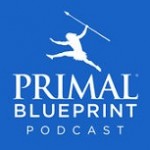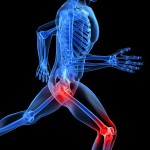115 Things Endurance Athletes Need To Know
Posted on 26th February 2016 | by steve
 If one of your goals for 2016 is to get fitter then exercise and good nutrition are going to be essential parts of your overall plan. However, it all needs to be done in a safe and effective way so that you don’t end up wasting your time – or even worse – give yourself an injury!
If one of your goals for 2016 is to get fitter then exercise and good nutrition are going to be essential parts of your overall plan. However, it all needs to be done in a safe and effective way so that you don’t end up wasting your time – or even worse – give yourself an injury!
115 Things Endurance Athletes Need To Know is a fantastic podcast from Brad Kearns (of the Marks Daily Apple team) that will help you exercise and eat in a safe, intelligent and effective way, and we highly recommend it to anybody aiming to get fitter, drop some weight or just become generally healthier this year.
Don’t worry – the podcast is not as heavy as the title suggests, and it covers information that is relevant to both casual exercisers and those who may be training for something bigger (like the Great North Run!).
In fact, we think the podcast is so good that in addition to providing a link to the audio recording we’ve also taken the time to reproduce the text of the podcast below, so check it (and the other great information available on the MDA site) out.
Happy reading, listening, exercising and eating!
Section 1 – Aerobic Training
- Endurance athletes on the whole carry too much body fat – a consequence of carbohydrate dependency eating, and overly stressful training patterns.
- The fundamental elements of the Primal Endurance approach are to slow down and emphasise aerobic workouts, balance stress and rest, and adopt an intuitive, flexible approach to training.
- The conventional approach to endurance training is deeply flawed, resulting in widespread burnout and excess body fat among even the most dedicated athletes.

- The flawed conventional approach can be characterised as “Chronic Cardio” – too many moderate to difficult intensity workouts with insufficient rest and recovery.
- Chronic cardio can cause permanent damage to the heart by promoting chronic inflammation and scarring the heart lining from repeated microtears.
- Moderate exercise – for example running 10 minute miles for only 1-2.5 hours per week – can dramatically increase longevity in comparison to more arduous and time consuming training schedules.
- The critical distinction for endurance workout intensity is aerobic versus anaerobic. Aerobic workouts emphasise fat burning and are energising and minimally stressful. Anaerobic workouts emphasise glucose burning, and elicit a significant stress response.
- Emphasising aerobic workouts delivers the best return on investment for endurance athletes because endurance competitions – even as short as one hour – are fuelled almost entirely by aerobic energy systems.
- Developing an efficient aerobic system is like building a powerful clean burning Tesla engine. Excess anaerobic training, with an insufficient aerobic base, is like fine tuning a small, inefficient, dirty burning car engine.
- Aerobic development is best accomplished by training exclusively at aerobic heart rates for a sustained period of time. This enables a steady progression in fat burning efficiency without interruption from stressful high intensity workouts.
- The cut off point for aerobic training is the Maximum Aerobic Heart Rate, defined as being the point at which maximum aerobic benefits occur with a minimum amount of anaerobic stimulation. To calculate your maximum aerobic heart rate use Dr Phil Maffetone’s formula of 180- your age.
- Endurance athletes have extreme difficulty slowing down into what feels like a disturbingly slow aerobic heart rate zone, but massive improvements can occur over time by becoming more efficient – that is faster – at a comfortable conversational aerobic pace at the same heart rate.
- Aerobic improvement can be tracked by conducting Dr Maffetone’s Maximum Aerobic Function test (MAF test). You complete a fixed course such as running 8 laps around a running track at a fixed heart rate as close as you can to your maximum aerobic heart rate (180-your age) and the track your time and improvements over several tests, which indicates an improvement in your aerobic fitness.
- Improvement in MAF test results means that your training is working – you are becoming more efficient at burning fat at aerobic heart rates. Regression in MAF test results suggest that you are overtraining, and/or overstressed.
- High intensity workouts are not advised until a strong aerobic base is built as evidenced by steady improvement in MAF test results.
- Even a slight stimulation in anaerobic metabolism during a workout can accelerate sugar burning for up to 72 hours after the workout.
- Besides exceeding maximum aerobic heart rate with chronic cardio endurance athletes are often guilty of an overly regimented, overly consistent approach, which brings a high risk of over stress and burnout.
- Aerobic and anaerobic workouts, as well as primal aligned eating, all help improve mitochondrial function, protecting you from stress induced oxidative damage, and delaying the aging process.
- Mitochondria burn fat and ketones more cleanly than they do glucose. Glucose burning generates free radicals, causing oxidative damage and accelerated aging.
- Nose breathing during exercise ensures the most efficient exchange of oxygen on each breath, and helps you maintain an aerobic pace.
- The “Black Hole” designates an exercise intensity that is slightly too strenuous to be aerobic, but not difficult enough to qualify as a peak performance speed workout. Unfortunately, this intensity level or range is the default landing area for many exercisers, from novice all the way up to competitive athletes.
- A wireless heart rate monitor is essential to conducting proper aerobic workouts, because intensity at aerobic maximum is so comfortable that it is easy to drift beyond that and into the black hole.
- Slowing down to perform better in endurance competition has been proven effective by the world’s leading athletes for over 50 years, but it is still difficult to convince many casual enthusiasts about its effectiveness.
- The 7 Habits Of Highly Effective Primal Endurance Athletes are: Sleep, Stress/Rest balance, Intuitive and personalised schedule, Aerobic emphasis, Structured intensity, Complementary movement and lifestyle practices, and Periodisation.
Section 2 – Periodisation
- Periodisation entails focusing on different types of training during specific blocks of time over a calendar year. The broad annual schedule looks like this: aerobic base period to begin the season, mini periods of intensity and competition followed by mini rest and aerobic periods, and finally a lengthy rest period to end the season.
- Consistency in the context of endurance training is ill advised. You are better off being intuitive, varied and flexible in your workout patterns. The process of fitness progress is dynamic and unpredictable, not linear.
- A good strategy for intuitive training is to align workout difficulty with subjective evaluations of your daily levels of energy, motivation and health.

- The aerobic base period to commence the season should last at least 8 weeks, and possibly much longer if progress with aerobic function stalls or over stress symptoms are present (illness, injury, fatigue, etc.).
- Intensity should be introduced only after a successful aerobic period, and last a maximum of 4 weeks, with greatly reduced total training volume during that time before a mini rest period is observed.
- Mini periods of high intensity during the season should be followed by a period of nearly equal duration composed of rest and aerobic base building.
- The season ending rest period should be diligent an comprehensive – no training, no thinking about training, and extra attention to rest, sleep, and neglected hobbies and social connections.
- Tapering with a huge reduction in training volume and intensity promotes peak performance – it’s very difficult to lose fitness if you maintain even a fraction of normal training.
- True de – training from illness or inactivity causes rapid fitness losses, but you can regain fitness at approximately a 1:1 exchange of time off to time returning to training.
- The specific nature of high intensity workouts is of minimal importance. All anaerobic exercise whether its intervals, time trials, hill repeats, tabata, whatever, has a similar effect on the body.
- Heart rate variability measures the fluctuation in your beat to beat intervals. Surprisingly, more variation in beat to beat intervals represents a fit healthy recovered cardio vascular system as indicated as a higher HRV score on a 1-100 scale.
- HRV is a sophisticated and sensitive indicator of cardio vascular stress, and is a great complement monitoring to resting heart rate for tracking recovery and making optimal training decisions.
Section 3 – Primal Eating
- The standard American diet is based on excessive intake of grains and sugar which stimulates excess insulin production leading to lifelong insidious weight gain, chronic inflammation, and elevated disease risk factors.
- A high carb grain based diet leaves endurance athletes nutrient deficient, inflamed, and more susceptible to oxidative damage from the stress of training, general life and poor nutrition.
- Grains – aka beige glop – are a cheap source of calories that are immediately
 converted to glucose upon ingestion and offer minimal nutritional value. There is no good reason for humans to consume grains, and many good reasons not to, especially for those sensitive to gluten and other anti-nutrients present in grains.
converted to glucose upon ingestion and offer minimal nutritional value. There is no good reason for humans to consume grains, and many good reasons not to, especially for those sensitive to gluten and other anti-nutrients present in grains. - Everyone is sensitive to the health compromising effects of grains at some level, especially the pro-inflammatory effects of gluten and the propensity of the leptin proteins in grains to cause leaky gut syndrome.
- Carrying excess body fat despite careful attention to diet and a high volume of training hours is largely due to carbohydrate dependency caused by a grain based diet and chronic training patterns.
- Endurance athletes can dial in optimal carb intake by first asking the question: Do you carry excess body fat? Any excess in body fat calls for a reduction in carbohydrate intake to accelerate fat burning.
- Weight loss through portion control and devoted calorie burning is ineffective. Calories burned through exercise stimulate a corresponding increase in appetite. The secret to weight loss is hormone optimisation, primarily through moderating excess insulin production.
- Endurance athletes with optimal body composition looking to improve performance and recovery should choose high nutrient value carbs like abundant vegetables, sensible fruit intake, sweet potatoes, wild rice, quinoa, and dark chocolate.
- High calorie burning endurance athletes with optimal body composition can enjoy occasional treats, but the habit of unbridled intake of nutrient deficient refined carbohydrates should be eliminated in the interests of health and performance.
- Even lean people suffer from the negative health consequences of carbohydrate dependency, such as chronic inflammation, oxidative damage and accelerated aging and disease risk factors.
- Carbohydrate dependency leads to burnout because the body perceives fluctuating blood sugar as stressful vent every time, leading to an overstimulation of the fight or flight response, and eventual burnout.
- The carbohydrate dependency cycle looks like this: Consume a high carb meal, elevate your blood sugar, stimulate an insulin response, shut off fat metabolism and promote fat storage, experience fatigue and sugar cravings from that dropped blood sugar, consume more carbohydrates, stimulate the fight or flight response to regulate blood sugar, dys regulate and exhaust assorted hormonal processes, and finally end up in burnout and lifelong insidious weight gain patterns.
- Primal style eating is fractal and intuitive. When escaping carbohydrate dependency and becoming fat adapted you don’t have to rely on ingested carbs for energy. Eating patterns can be driven by hunger, pleasure and maximal nutritional benefit.
- Once fat adapted, intermittent fasting (IF) can be used to accelerate fat loss, fine tune insulin sensitivity, and improve cellular repair for anti-aging, immune boosting effect.
- A suggested entry strategy for intermittent fasting is to simply wait until you experience hunger before eating in the morning. This enhances your appreciation for food, and provides feedback on your progress for fat adaptation.
- Any excess body fat you have is a function of your genetic predisposition to store fat combined with the amount of insulin you produce in your diet. Losing excess body fat involves moderating insulin production by ditching sugars and grains.
- Primal style eating minimises the importance of genetic pre-dispositions and enables you to achieve your personal ideal body composition.
- Escaping sugar dependency and becoming fat adapted gives you a cleaner burning engine, since glucose burning promotes inflammation and oxidative stress.
- Ketones are an internally manufactured energy rich by product of fat metabolism in the liver when blood glucose and insulin levels are low due to carbohydrate restriction. Ketones are burnt efficiently by the brain, heart and skeletal muscles in he same manner as glucose.
- Ketogenic endurance training represents an exciting new frontier for peak endurance performance. Ultra-low carb athletes can perform amazing feats and literally become “bonk” proof by remaining in a fat and ketone burning state.
- Ketogenic endurance training is an advanced strategy that requires a strict devotion to very low dietary carbohydrate intake. However, its acceptable to waver in and out of this fragile state and still enjoy the overall performance benefits of being fat adapted instead of carb dependent.
- A bonk proof ketogenic athlete is preserving ketones for use by the brain, relieving it of glucose dependency, and prioritising fat for muscular fuel.
- Ketones burn cleaner than carbohydrates, minimising free radical damage and delivering a potent anti-inflammatory effect. Ketogenic endurance athletes recover faster from stressful training, improve cognitive function, and minimise the disease risk factors associated with a pro inflammatory high carb diet.
- The new “fat burning beast” paradigm offers great promise to endurance athletes, and can have a even more profound effect on the global obesity epidemic. Reduce carb intake in favour of fat, and you reduce excess body fat, period.
- Dr Jeff Voleks vaunted “Faster” study, and Dr Peter Ateya’s personal experiments prove unequivocally that any endurance athlete can quickly become fat adapted and deliver performances superior to carb fuelled efforts all the way up to anaerobic threshold intensity.
- Being carb dependent sucks on several levels. Our performance hinges on the tenuous ability to assimilate additional carbs during exercise, you produce more inflammation and oxidative damage from burning a dirty fuel source, you risk muscle catabolism via gluconeogenesis, and you have difficulty reducing excess body fat.
- Step 1 in eating primally is to ditch sugars, grains, and industrial vegetable and seed oils for 21 days. Step 2 is to emphasise highly nutritious primal food such as meat, fish, fowl, eggs, vegetables, fruits, nuts and seeds, and supplemental carbs like sweet potatoes, the natural plant and animal foods that fuelled human evolution.
- While transitioning to primal involves eating rich, satisfying meals some can expect to struggle initially due to lifelong carbohydrate dependency and the drug like addictive properties of sugar and wheat.
- Eating primally and losing excess body fat does not involve any suffering, struggling or sacrifice. The high satiety factor of primal meals will prevent the cravings and binges that derail calorie restriction dieters.
- Primal eating can improve endurance performance by improving fat metabolism, moderating the overstimulation of fight or flight hormones, improving immune function, improving digestion and reducing inflammation and oxidative damage from muscle breakdown and training.
- You can accelerate the process of fat adaptation in a depleted post workout state when your appetite hormones are most sensitive to re-wiring. Instead of habitually pounding sugary treats fast for a stretch if you can, and/or choose high fat, low insulin producing foods. You will rewire your brain to become less dependent on carbohydrates at all times.
- The Primal Blueprint carbohydrate curve predicts the results of body composition goals based on different levels of carb intake. 100g of carbs a day or less promotes fat loss, 150g is the primal maintenance level, over 150g per day on average promotes lifelong insidious weight gain, and over 300g per day promotes metabolic disease patterns.
Section 4 – Strength And Sprint Training
- Strength training is essential to success in endurance sports. Putting your muscles under loads by lifting heavy loads, whether it’s by weights, machines or just body weight resistance exercises stimulates positive hormonal adaptations and helps you preserve good technique and maximum power output as muscles fatigue during your endurance workouts.
- Strength training can help athletes identify functional weaknesses that lead to poor technique, overly stressful workouts and delayed recovery.

- Any endurance athletes err by conducting quote “blended” workouts that deliver both a cardio vascular training effect – which is unnecessary in light of their extreme cardio vascular fitness already – and fall short of delivering absolute power that endurance athletes are deficient in.
- Endurance athletes with excellent cardio vascular endurance should focus on brief high intensity strength sessions that increase raw strength and explosiveness. Emphasis should
- be on maintaining excellent technique and workouts, and when fatigue inhibits reaching maximum power level.
- Endurance athletes over age 40 will particularly benefit from strength training since strength declines more steeply than endurance with aging. High intensity strength sessions will deliver a profound anti-aging effect by preserving muscle mass and optimising adaptive hormones.
- Primal essential movements represent a safe, simple, effective full body workout sequence consisting of push ups, planks, squats and pull ups. A series of progression exercises allow athletes of al fitness levels to perform an appropriate number of reps to increase competency over time.
- Maximum sustained power training (MSP) represents a cutting edge strategy to improve absolute power and explosiveness. These sessions involve popular functional movements like dead lifts, squats and leg presses, lifting heavy weights for few reps and taking frequent mini rest periods to sustain maximum power output throughout the workout.
- MSP sessions enable you to lift more total weight than the traditional light weight/high reps “multiple stations till exhaustion” blended workouts. The MSP strategy is to go maximum or go home. You never reduce weights, and you stop when you can’t lift the 5 rep max baseline MSP heavy bar due to accumulated fatigue.
- “All out” sprinting is widely disregarded by mileage obsessed endurance athletes who don’t see the connection between short sprints and endurance performance but becoming competent in sprinting will improve endurance performance in many ways including reduced perceived fatigue, enhanced fat metabolism, enhanced mitochondrial function and oxygen utilisation, improved muscle buffering capacity and strengthened muscles and connective tissue.
- Sprinting, like strength training, delivers a potent anti aging effect by flooding the bloodstream with adaptive hormones and actualising the anti aging maxim of “use it or lose it”.
- Maximum intensity sprinting significantly increases your resilience to physical and psychological fatigue at lower intensity levels. Your muscles regenerate energy faster through improved calcium/potassium pump function, and your central nervous system recalibrates so that slower paces feel easier.
- One of the most important benefits of sprinting is how it “cuts you up” like nothing else. Primal adapted eaters who experience stalled weight loss can send an intense message to the brain to rap up fat metabolism as n adaptive response to sprinting, an effect that continues for up to 24 hours after the workout. Ever seen a fat sprinter? Nope!
- Endurance athletes must adopt a different mindset for sprint workouts, rejecting the “suffering” ethos of endurance sessions in favour of striving for consistent quality performances, “perform at max or go home” workouts, and when your time gets slower, when your form becomes compromised or when effort increases to maintain the same times.
- Consistent quality sprinting means a similar time and similar perceived exertion each effort. If it becomes harder to deliver the same time, or if the time slows at the same perceived exertion the workout must end. As fitness progresses strive to increase speed before considering increasing the number or reps.
- Sprinting in a pre fatigued state is not only harmful for muscles, but also the central nervous system. Athletes should only sprint when 100% rested and energised to deliver a peak performance. Extensive warm up and technique drills should be performed before delivering maximum efforts.
- A proper warm up entails dynamic movements that elevate your temperature, lubricate your joints (no cracking or creaking), and gets you central nervous system focused on good technique with form drills. A deliberate cool down will minimise the stress impact of the session and facilitate faster recovery. No Abrupt endings!
- Running is the best sprinting choice due to the benefits of weight bearing intense activity. If you have joint or injury concerns or specific competitive goals you can sprint with low or no impact exercises (swimming, cycling, etc.). Ideal duration of sprints is between 10-30 seconds, and 4-6 reps of running is plenty. Since running is harder, shorter and fewer work efforts are advised.
- The rest interval between sprints should be sufficient to ensure respiration returns to near normal, muscles feel reinvigorated, and that mental energy is refreshed. This will probably be achieved in 30-60 seconds of rest consisting of slow movement.
Section 5 – Complementary Movement And Lifestyle Practices
- Getting adequate sleep is not as simple as logging 8 hours per night. Sleep requirements vary by the seasons, training workload, overall life stress levels and genetic factors.
- Optimal sleep starts with mellow, dark, calming evenings that minimise artificial light and digital stimulation after dark. This allows for the circadian influenced “Dim Light Melatonin Onset” to happen on cue, making you feel sleepy soon after it gets dark.
- Awakening naturally, near sunrise, feeling refreshed and energised is indicative
 of adequate sleep. Feeling less than perky in the morning suggests you must minimise artificial light and digital stimulation the previous evening.
of adequate sleep. Feeling less than perky in the morning suggests you must minimise artificial light and digital stimulation the previous evening. - An ideal sleeping environment is quiet, clutter free, cool, and completely dark. Even tiny light emissions like from an LED alarm clock or something can disturb the highly sensitive release of melatonin into the blood stream.
- Napping is especially effective for catching up on evening sleep deficiencies, refreshing brain neurones after sustained periods of peak cognitive functioning, and generating a pulse of adaptive hormones into the blood stream.
- The “Active Couch Potato Syndrome” describes an actual medical phenomenon of devoted fitness enthusiasts nevertheless suffering from elevated disease risk factors due to predominantly sedentary lifestyle patterns outside of their workouts.
- Walking will improve many aspects of your general health, and also contribute to aerobic fitness by stimulating the complete range of aerobic muscle fibres and energy producing enzymes.
- Extended periods of sitting and stillness can compromise musculoskeletal function, cellular health, cardio vascular function, and fat metabolism, negating many of the benefits of endurance training.
- Taking frequent “movement breaks” throughout the day improves insulin sensitivity and fat metabolism, improves muscular balance, flexibility and bone density, and enhances cognitive function through improved circulation.
- The quote “athletes mind set” of being lazy in everyday life on account of compiling an impressive workout log must be re-framed to emphasise the importance of increased everyday movement. It’ll help speed recovery and optimise metabolic function.
- Cardiovascular fitness is the ability to challenge the heart and certain muscles to perform extreme athletic efforts. Cardiovascular health is the ability to efficiently deliver oxygen to 100 % of the cells in your body.
- Creating a stand up desk environment is great, but the primary goal should be to create more variation in your workplace position, switching back and forth from standing to sitting to sitting on the ground, and going mobile whenever possible with meetings, phone calls and the like.
- Brain science confirms that humans are incapable of focusing for longer than 20 minutes without a break. Taking a 5 minute break for every 20 minutes of peak cognitive focus, and longer breaks every few hours will improve metabolic health and cognitive performance.
- Complementary movement and mobility exercise like yoga and Pilates improve athletic performance by allowing you to preserve correct technique and optimal power output even as you fatigue during workouts.
- Neglecting complementary movement and mobility exercises can compromise athletic performance by allowing inefficiencies and imbalances to occur from narrowly focused training patterns. This leads to accelerated fatigue, diminished power output and increased injury risk.
- Deliberate movement practices also improve your ability to focus during challenging endurance efforts, and provide a calming balance to the high stress nature of endurance workouts.
- Play is a fundamental element of human health, and a key factor in the success of human evolution. Play is a critical stress release from the pressure, schedules and responsibilities of daily life, and promotes the development of a cognitively fluid mind.
- Play can take many forms, but ideally involves unstructured outdoor physical activity to balance the structured, confined and sedentary forces of modern life.
- Primal thrills can deliver a healthy burst of adrenaline to counter the mundane and predictable nature of modern life. Chose challenges that are well managed, and just outside of your comfort zone.
- The old injury treatment protocol of R.I.C.E. (rest, ice, compression, elevation) is being replaced in the eyes of many experts in favour of E.C.M (elevate, compress and move).
- Cold therapy can speed recovery by delivering a refreshing psychological sensation, and recalibrating the central nervous system and muscle metabolic activity back to calm, cool resting levels.
- Full body immersion into water at 50-60 degrees farenheit (10 – 15 degrees Celsius) for 5-10 minutes is believed to be the optimal strategy for post exercise cold therapy.
- Compression wraps or garments act like pumps to squeeze blood vessels open with force, allowing more blood and oxygen into the area and improving removal of waste and excess fluid. Studies suggest educed muscle soreness and improved performance using compression garments.
- Post exercise hydration is essential to ensuring that assorted recovery mechanisms work without interference from the immediate urgency of needing to re-hydrate.
- Movement is also an important element of recovery. Athletes should refrain from prolonged stillness periods after workouts, and throughout the day. Over time, efforts to move more will result in improvements in the familiar morning stiffness that may athlete’s experience.
- For post workout refuelling, forget the synthetic bars, gels, beverages and sweets. Instead, focus on getting wholesome nutritious food, like a salad.
- Self myofascial release is an effective recovery technique. Using rollers or balls, you can apply deep pressure to trigger points that represent the origination of stiffness and mobility problems that possible refer pain elsewhere.
- Self myofascial release delivers the additional benefit of stimulating the parasympathetic nervous system, allowing you to truly unwind after workouts.
- Releasing your attachment to the outcome can alleviate the psychological stress of missing workouts or performing below expectations. Instead, relax, be patient, and focus on the enjoyment of the process of getting fit. Take what your body gives you each day and nothing more.
Ok, that’s it, but all of these points are covered more completely in the book Primal Endurance by Mark Sisson and Brad Kearns, so check it out if you’d like more information.
 If one of your goals for 2016 is to get fitter then exercise and good nutrition are going to be essential parts of your overall plan. However, it all needs to be done in a safe and effective way so that you don’t end up wasting your time – or even worse – give yourself an injury!
If one of your goals for 2016 is to get fitter then exercise and good nutrition are going to be essential parts of your overall plan. However, it all needs to be done in a safe and effective way so that you don’t end up wasting your time – or even worse – give yourself an injury!

 converted to glucose upon ingestion and offer minimal nutritional value. There is no good reason for humans to consume grains, and many good reasons not to, especially for those sensitive to gluten and other anti-nutrients present in grains.
converted to glucose upon ingestion and offer minimal nutritional value. There is no good reason for humans to consume grains, and many good reasons not to, especially for those sensitive to gluten and other anti-nutrients present in grains.
 of adequate sleep. Feeling less than perky in the morning suggests you must minimise artificial light and digital stimulation the previous evening.
of adequate sleep. Feeling less than perky in the morning suggests you must minimise artificial light and digital stimulation the previous evening.